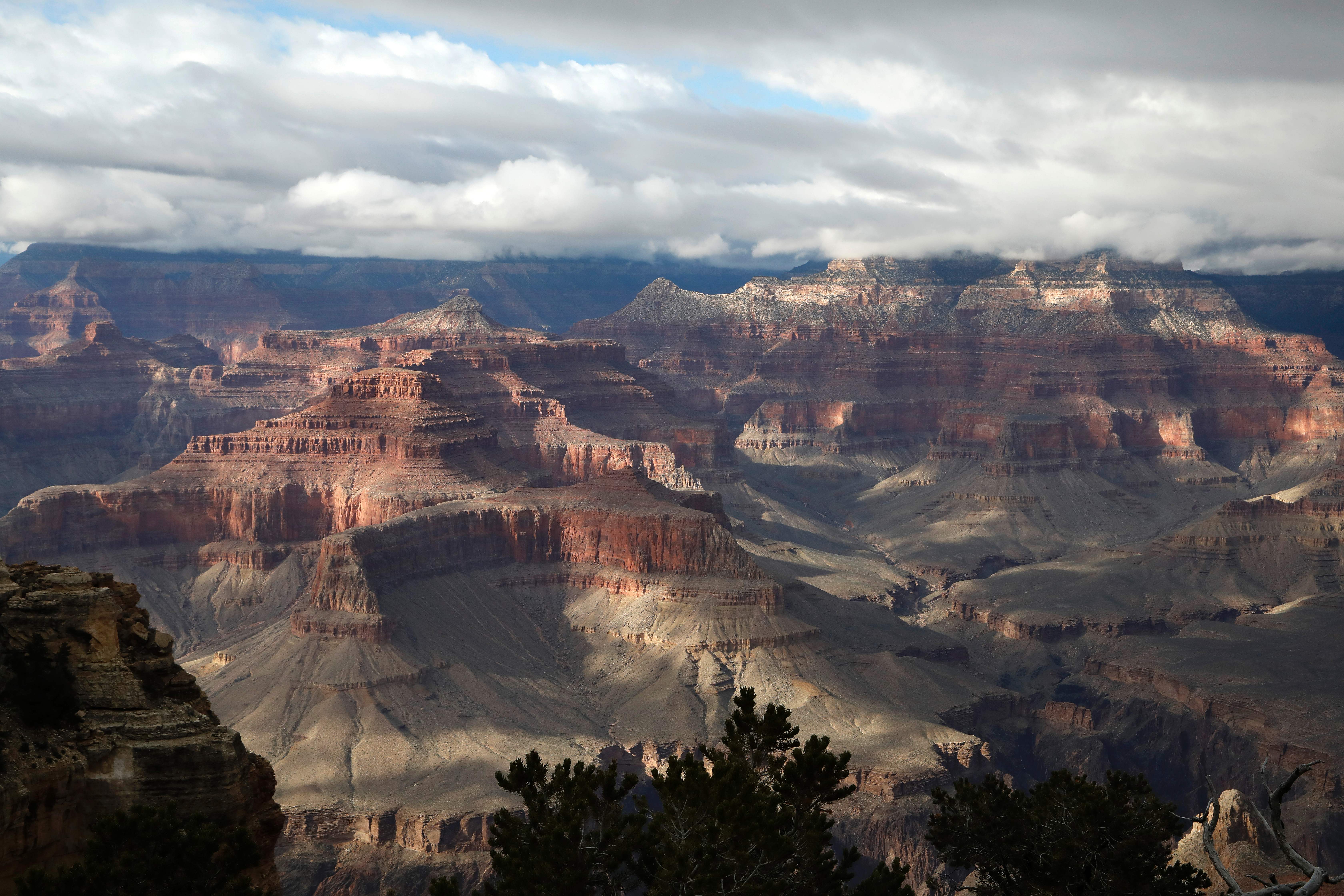FLAGSTAFF, Ariz. (AP) — The National Park Service plans to thin a herd of bison in the Grand Canyon through roundups and by seeking volunteers who are physically fit and proficient with a gun to kill the animals that increasingly are damaging park resources.
Some bison would be shipped out of the area and others legally hunted on the adjacent forest. Within the Grand Canyon, shooters would be selected through a lottery to help bring the number of bison roaming the far northern reaches of the park to no more than 200 within three to five years.
About 600 of the animals now live in the region, and biologists say the bison numbers could hit 1,500 within 10 years if left uncontrolled.
The Grand Canyon is still working out details of the volunteer effort, but it's taking cues from national parks in Colorado, the Dakotas and Wyoming that have used shooters to cut overabundant or diseased populations of elk. The Park Service gave final approval to the bison reduction plan this month.
Sandy Bahr of the Sierra Club says she's hopeful Grand Canyon will focus mostly on non-lethal removal.
The Grand Canyon bison are descendants of those introduced to northern Arizona in the early 1900s as part of a ranching operation to crossbreed them with cattle. The state of Arizona now owns them and has an annual draw for tags on the Kaibab National Forest. Nearly 1,500 people applied for one of 122 tags this year, according to the Arizona Game and Fish Department.
The bison have been moving in recent years within the Grand Canyon boundaries where open hunting is prohibited. Park officials say they're trampling on vegetation and spoiling water resources. The reduction plan would allow volunteers working in a team with a Park Service employee to shoot bison using non-lead ammunition to protect endangered California condors that feed on gut piles.
Hunters cannot harvest more than one bison in their lifetime through the state hunt, making the volunteer effort intriguing, they say.
"I would go if I had a chance to retain a portion of the meat," said Travis McClendon, a hunter in Cottonwood. "It definitely would be worth going, especially with a group."
Grand Canyon is working with state wildlife officials and the Intertribal Buffalo Council to craft guidelines for roundups and volunteer shooters, who would search for bison in the open, said Park Service spokesman Jeff Olson.
Much of the work would be done on foot in elevations of 8,000 feet or higher between October and May when the road leading to the Grand Canyon's North Rim is closed. Snowmobiles and sleds would be used to remove the bison meat, and helicopters in rare instances, park officials said.
Carl Lutch, the terrestrial wildlife manager for Game and Fish in Flagstaff, said some models require volunteers to be capable of hiking eight miles a day, carrying a 60-pound pack and hitting a paper plate 200 yards away five times.
The head and hide of the bison would be given to tribes, or federal and state agencies.
Lutch said one scenario discussed is splitting the bison meat among volunteers, with each volunteer able to take the equivalent of meat from one full bison. Anything in excess of that would be given to tribes and charities, he said. A full-grown bull can have hundreds of pounds of meat.
Theodore Roosevelt National Park in North Dakota used volunteers in 2010 for elk reduction, selecting 240 people from thousands of applicants, said park spokeswoman Eileen Andes. Some quit before the week was over, she said.
"We had quite a bit of snow, so you're not in a vehicle, you're not on a horse," she said. "You're hiking through snow to shoot elk and haul them out. It was exceedingly strenuous."


